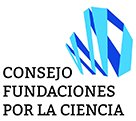Woo-suk Hwang is a good example of universal news. Both his promising advances in therapeutic cloning and the further disclosure of the big lie made headlines around the world. The same media that, in May 2005, catapulted this South Korean scientist to the top charts of research had him listed down, a few months later, as one of the greatest scientific swindlers. According to the press, the case was a hard blow for biomedical publications, which should have to reconsider their editorial methods. However, no mass communication media exerted any form of (known) self-criticism on their role throughout this case.
This was a two-act story. Act one, where the media unanimously praised the virtues of such a promising research and exalted its author. Act two, where reality imposed itself and the hero suddenly became a villain. The internationally renowned journal Science saw its credibility at stake and became partly responsible, thanks to its powerful press office, for the worldwide diffusion of this fraud. However, equally responsible were the mass media which, with simultaneous, homogeneous and omnipresent publications, ultimately emphasized the event.
Hwang’s investigations, his expectations and disappointments, clearly illustrate the virtues and deficiencies of science journalism. Serious reflection arises on the path undertaken by scientific journals, increasingly concerned about their presence in the mass media, or on the task of the journalist who has a duty to inform or train the public on complex matters such as therapeutic cloning. These are two examples of subjects raised in this third debate on science journalism, organized by the Esteve Foundation.
Two precedents –human genome sequencing and SARS– confirm the usefulness of these meetings, where four scientists and four journalists sit at the same table and discuss openly how the media divulge science. With that purpose in mind, very different articles published in four foreign newspapers serve as a starting point for discussion. This time, the newspapers Chosun Ilbo (South Korea), Libération (France), Clarín(Argentina) and USA Today (United States) were selected.
The debate was held on 10 November 2006 at the Gallery Hotel of Barcelona. On the scientist side: Jaume Baguñà (Department of Genetics. Faculty of Biology. University of Barcelona), Acaimo González(Andalousian Center of Developmental Biology. CSIC –Pablo de Olavide University. Seville), Francisco Murillo (Department of Genetics. Faculty of Biology. University of Murcia), and Francesca Vidal (Cell Biology Unit. Faculty of Sciences. Autonomous University of Barcelona).
On the science communication side: Hugo Cerdà (customary collaborator of the Health and Future supplements of El País), Enrique Coperías (Muy Interesante), Joaquim Elcacho (Avui), and Luis Pablo Francescutti(Department of Communication Sciences. Rey Juan Carlos University. Madrid).








